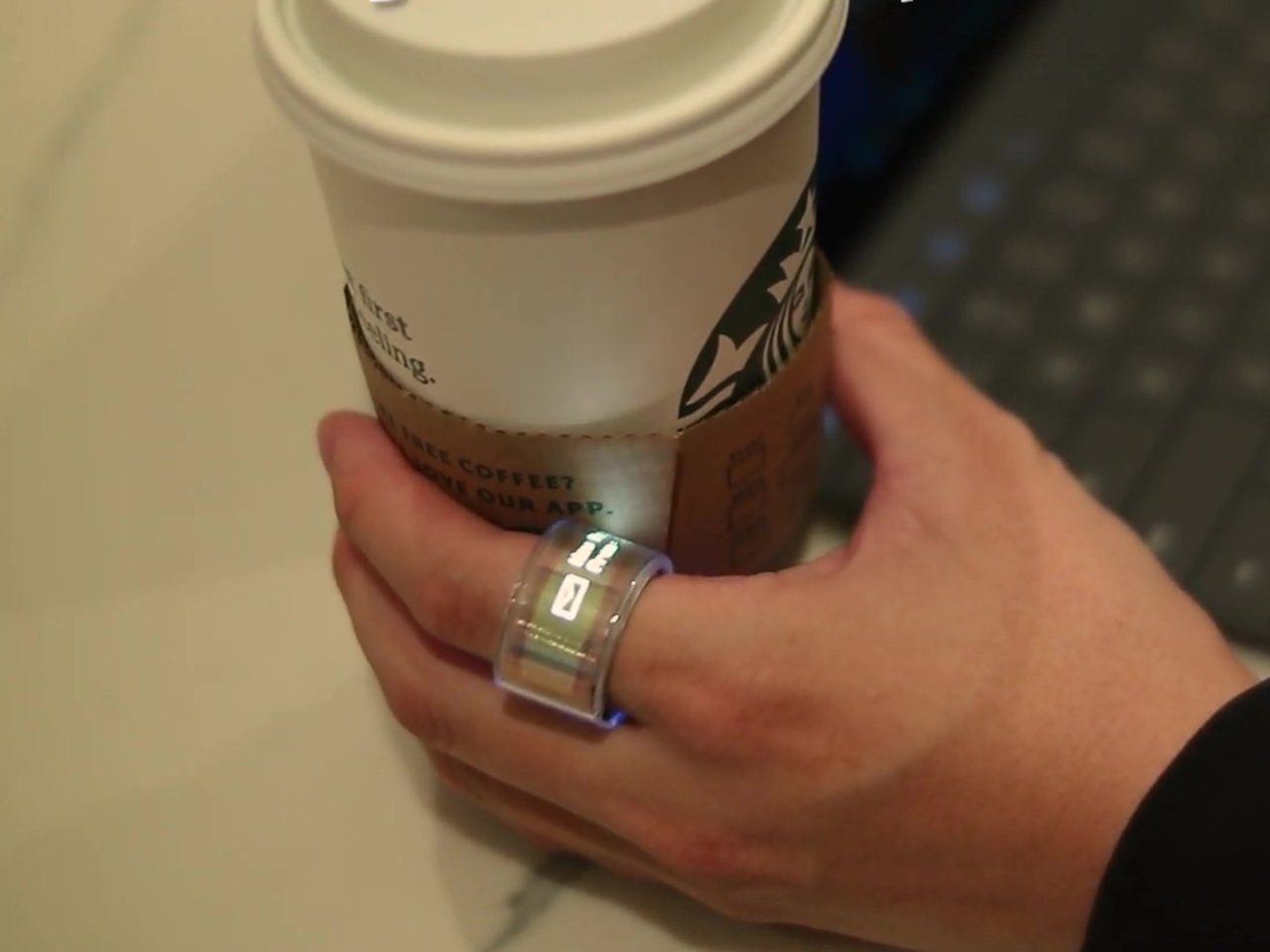Wearable technology keeps getting smaller, but most devices still force you to look somewhere else for information. Smart rings collect tons of health data, then make you pull out your phone to see what they learned. Smartwatches put displays on your wrist, but that still requires lifting your arm and focusing attention away from whatever you’re doing.
VisRing flips this approach by wrapping a flexible OLED display directly around your finger, creating the ultimate ambient information device. This research prototype from academic researchers explores what happens when your ring becomes a tiny dashboard that’s always visible, always accessible, and never more than a glance away.
Designers: Taiting Lu, Christian Krauter, Runze Liu, Mara Schulte, Alexander Achberger, Tanja Blascheck, Michael Sedlmair, Mahanth Gowda (ACM)
The technical achievement is genuinely impressive for something so small. The flexible OLED display measures just 160 x 32 pixels but wraps 270 to 360 degrees around the ring, maximizing screen real estate without making the device unwearable. At 6.6 grams, it weighs about the same as a traditional wedding band while packing in a microcontroller, Bluetooth module, battery, and touch sensors.
VisRing specializes in what researchers call “nano visualizations” – tiny graphics that distill complex information into instantly readable formats. Heart rate becomes a simple pulse animation, step count appears as a progress bar, and notifications flash as brief icons. The goal is ambient awareness rather than detailed analysis, giving you just enough information to stay informed without getting overwhelmed.
Touch gestures on the curved display allow basic navigation and interaction, though the tiny surface area makes precision challenging. Users can swipe through different data views, tap to acknowledge notifications, or select simple options. The interface prioritizes glanceable information over complex interactions that would be frustrating on such a small screen.
A twelve-person user study revealed both the promise and the challenges of finger-worn displays. Participants found the ring comfortable and socially acceptable, appreciating the discretion and immediacy of having information literally at their fingertips. The wraparound display felt natural, and the visualizations were surprisingly readable despite the tiny size.
However, the study also highlighted significant design challenges that any commercial version would need to address. Battery life becomes a constant concern when powering a display this small. Accidental touches happened frequently, especially during hand washing or typing. The curved screen surface makes certain viewing angles difficult, and bright sunlight renders the display nearly invisible.
Durability emerges as another major hurdle. Flexible OLED displays are inherently more fragile than traditional ring materials, making the device vulnerable to scratches, water damage, and the general abuse that hands endure daily. The complexity of cramming electronics into a ring form also raises questions about repairability and long-term reliability.
VisRing represents a fascinating exploration of how small wearable displays can become while remaining useful. The prototype demonstrates that finger-worn visualizations are technically possible and surprisingly comfortable, but also reveals the significant engineering challenges that remain. Whether nano visualizations on your finger represent the future of ambient computing or just an interesting research dead end remains to be seen.
The post This Smart Ring Has a Flexible Screen That Wraps Around Your Finger first appeared on Yanko Design.

